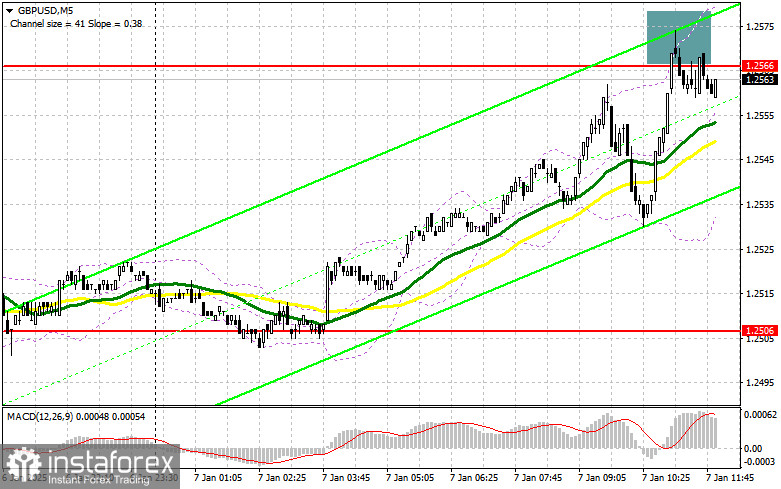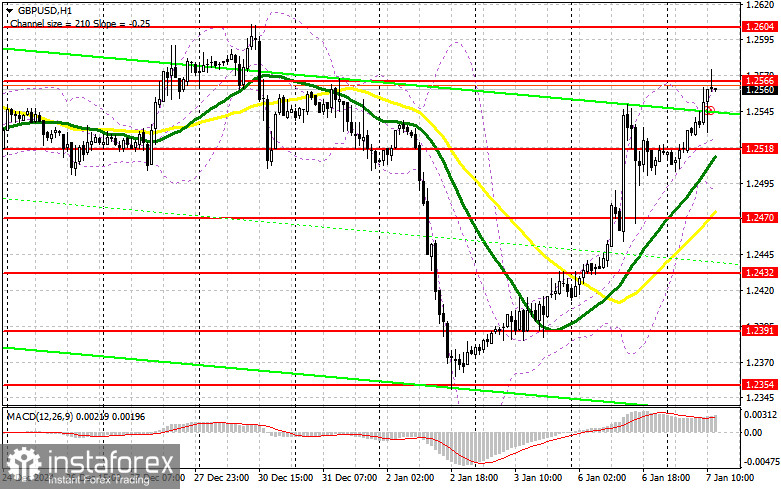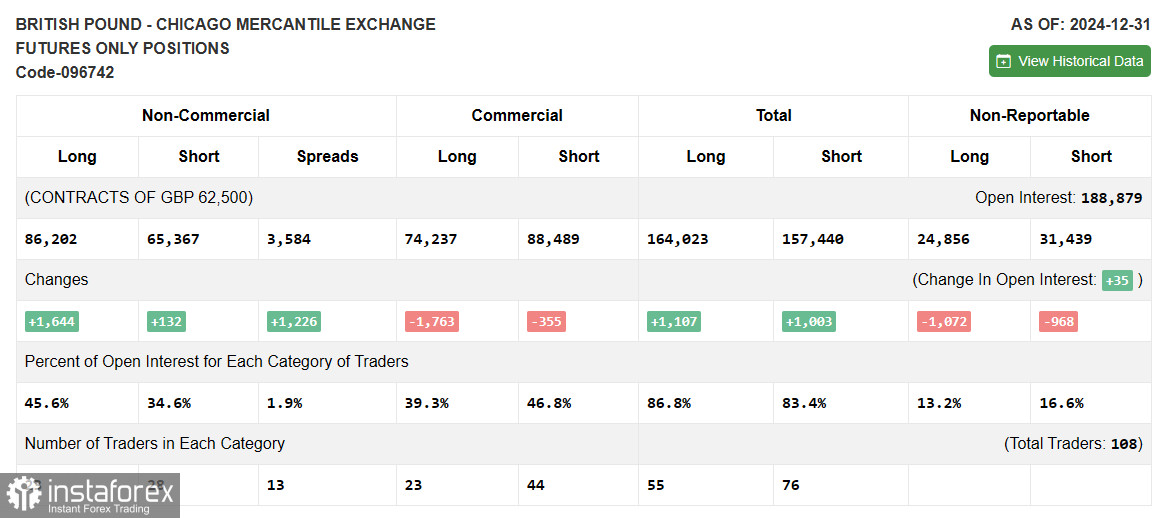In my morning forecast, I focused on the level of 1.2566 and planned to make market entry decisions based on it. Let's look at the 5-minute chart and analyze what happened there. The rise and formation of a false breakout at this level provided a good entry point for short positions, but the pair failed to see a significant drop, raising questions about the presence of sellers in the market even at these levels. The technical picture has been slightly revised for the second half of the day.

To Open Long Positions on GBP/USD:
Mediocre data on the construction sector activity in the UK limited the pair's upward potential but did not have a significant impact on the bullish market. Traders seem to be focused on U.S. statistics, which could further boost GBP/USD growth if there is a sharp slowdown in U.S. ISM services activity and a decline in job openings and labor turnover, expected today from the Bureau of Labor Statistics. If the pair declines on strong data, I anticipate buyers to emerge around the new support at 1.2518. A false breakout at this level will provide a good entry point for buying, aiming to recover GBP/USD towards the 1.2566 resistance, where trading is currently focused. A breakout and retest above this range will lead to a new entry point for long positions, with the prospect of reaching 1.2604, where buyers may face challenges. The ultimate target will be the level of 1.2638, where I plan to take profits. If GBP/USD declines and there is no activity from bulls around 1.2518, buyers will lose momentum, causing the pair to stagnate in a sideways channel. In this case, only a false breakout near the next support at 1.2470 will create suitable conditions for opening long positions. I plan to buy GBP/USD immediately on a rebound from the 1.2432 low, aiming for a 30–35 point correction intraday.
To Open Short Positions on GBP/USD:
Pound sellers are not rushing to act, even around 1.2566, as the morning defense of this level did not yield significant results. The apparent reluctance of large players to sell the pound even at its current peak could lead to a much larger pair rise following weak U.S. data, so caution is advised with short positions. Another false breakout near 1.2566, similar to the one analyzed earlier, would be a reason to increase short positions, targeting a decline to 1.2518. A breakout and retest from below this range will trigger stop orders, paving the way to 1.2470, where moving averages favor the bulls. This would be a significant blow to buyer positions but would not substantially impact the upward trend. The ultimate target will be the 1.2432 level, where I plan to take profits. If demand for the pound persists following U.S. data and sellers do not act around 1.2566, buyers will gain a strong chance for another wave of growth. Bears will have no choice but to retreat towards the 1.2604 resistance. I will sell there only on a false breakout. If there is no downward movement, I will seek short positions on a rebound around 1.2638, aiming for a 30–35 point correction intraday.

The COT (Commitment of Traders) report for December 31 showed an increase in both long and short positions. Overall, the balance of forces remained unchanged as many traders adopted a wait-and-see approach at the end of the year following the Bank of England's final meeting. Questions remain about the BoE's future stance, so attention will likely shift to Donald Trump's inauguration rather than UK interest rates. If Trump's stance is softer and does not involve restrictive tariffs against the UK, the pound will likely regain ground and strengthen. Otherwise, significant growth in GBP/USD is unlikely in the near term. The latest COT report indicates that non-commercial long positions increased by 1,644 to 86,202, while non-commercial short positions added 132 to reach 65,367. As a result, the gap between long and short positions widened by 1,226.

Indicator Signals:
Moving Averages:
Trading above the 30- and 50-day moving averages indicates a new wave of pair growth.
Note: The period and prices of moving averages are based on the H1 hourly chart and differ from the general definition of classical daily moving averages on the D1 daily chart.
Bollinger Bands:
In case of a decline, the lower boundary of the indicator around 1.2495 will act as support.
Indicator Descriptions:
- Moving Average (MA): Determines the current trend by smoothing volatility and noise. Period – 50 (yellow on the chart);
- Moving Average (MA): Determines the current trend by smoothing volatility and noise. Period – 30 (green on the chart);
- MACD Indicator (Moving Average Convergence/Divergence): Measures momentum changes. Fast EMA – period 12; Slow EMA – period 26; SMA – period 9;
- Bollinger Bands: Indicates overbought and oversold levels. Period – 20;
- Non-commercial traders: Speculators such as individual traders, hedge funds, and large institutions using the futures market for speculative purposes and meeting certain criteria;
- Non-commercial long positions: Total long open positions of non-commercial traders;
- Non-commercial short positions: Total short open positions of non-commercial traders;
- Non-commercial net position: Difference between short and long positions of non-commercial traders.





















